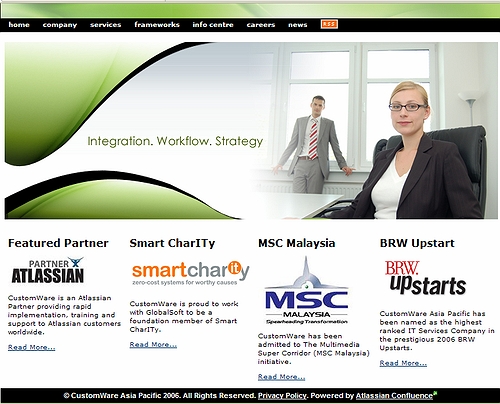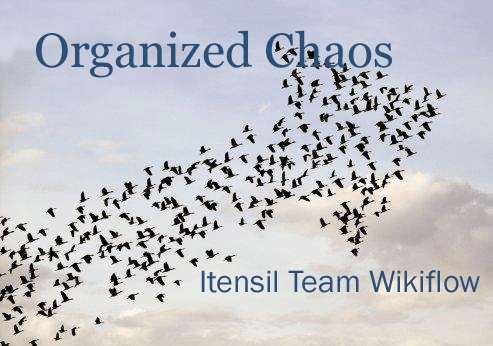I’ve stolen the first part of the title: Sam Huleatt’s best contribution to the New York Times article is giving it a new title that says it all. ![]()
The Facebook vs LinkedIn debate heated up again today, for the millionth time. The Facebook Fanclub’s recurring theme in comparing LinkedIn to Facebook is just how resume- and jobsearch-oriented LinkedIn is: go there, get what you want, then there’s nothing else to do there.
I’m sorry, but since when is this a complaint? Isn’t business all about having an objective and efficiently reaching it with minimum the time and effort? I suspect most of the LinkedIn “deserters” who switched to Facebook are independent types who have the time to hang around in Facebook, and are striving to enhance their personal brand.
Jeremiah’s Web Strategy Group is thriving which certainly helps boost his own brand. Robert Scoble wants to have more than 5,000 friends:
I think it sucks because it isn’t scalable and falls apart at 5,000 contacts. It pisses me off more and more every day because of that scaling wall.
Robert is a celebrity, and this is his fan-club. For the rest of us, I still believe less is more, (update: Doc Searls feels the same) and our online network should reflect our real-life one, instead of being an inflated collection of data records. We already saw the initial “link-mongering” on LinkedIn, but after a while things settled down, and the majority of LinkedIn users max out with 2-300 contacts, which is about the number of people you really, truly can know well. Now, somehow with Facebook all the netiquette is thrown away: I’m sure I’m not the only one flooded with invitations by people whose name does not even remotely sound familiar, and frankly, it’s frustrating.
I also fail to see the usefulness of seeing when my contacts watch a movie, pack for a trip, make coffee, or go to pee. This is a lot of noise with the sole purpose of gluing us to the screen (it works!), and made sense for on-campus dating, Facebook’s heritage, but let’s be real: how is this relevant to business? I’m not saying Facebook can’t be used for business at all – Jeff Nolan quotes a few examples:
Victoria Secret has a group for their Pink product line, 380k members and great interactivity, downloads, user generated content.
Ernst & Young is recruiting through Facebook and experiencing great results as a result of being connected with their candidates where they live.
So, yes, Facebook can be used for business, but these examples are all about external outreach, marketing, communication, recruiting. The point I’m making is, let’s not, while bringing everything Web 2.0 into the Enterprise 2.0 umbrella try to push Facebook to the corporate market – is has no value there. Let’s not equate Facebook to Social Networking, which is, and will be important for the Enterprise, but it needs context.
To illustrate my point, I’ll bring an example originally not “labeled” as Social Networking – oh, and the story has a Facebook-y twist, too.
![]() ConnectBeam started their life as del.icio.us for business, but arguably they have developed into a business-focused social networking tool: in context, with purpose. Ironically, it was Facebook that drove ConnectBeam into this market in the first place.
ConnectBeam started their life as del.icio.us for business, but arguably they have developed into a business-focused social networking tool: in context, with purpose. Ironically, it was Facebook that drove ConnectBeam into this market in the first place.
Founder Puneet Gupta launched CourseCafe in 2005, with the intention of becoming for students’ academic life what Facebook has become for their social Life – in fact I called it “The Other Facebook” for a reason: We thought that while Facebook dominated 80% of students’ life, the fun part, there was room for CourseCafe to help organize the remaining 20%, their studies. They had a good product, received good reviews and started to get traction, spreading through several colleges. Ultimately Puneet became worried about potentially clashing with FaceBook, and at the same time he received interest from the corporate world, so he reinvented his business, this time focusing on the Enterprise.
The new business, ConnectBeam is social bookmarking for the Enterprise – but soon they took a new spin, expanding towards social networking. But doing it in the right way, in context. The context is finding co-workers who are likely engaged in similar activities to yours, or at least have similar interests, since they execute similar searches and are using the same tags you do. Their product is tightly integrated with Google’s Enterprise search, showing a combined result of what Google finds, what is tagged by how many people, and the list of users sharing that item or tag.
Tight integration to Google has become their “secret sauce” in terms of sales success, too: just about any large organization has already a Google (or Fast ..etc) appliance, a dedicated person with a mission and budget to spend on Enterprise Search – so in fact what they sell is “search enhancement”. ConnectBeam has only launched recently, but they already have Honeywell, CSC, Booz Allen Hamilton and other big names as paying customers.
They’ve come full circle: driven away from the college market by Facebook, now offering context-specific social networking, beating Facebook to the Enterprise. They will not get 40 million users, and Puneet will not become a billionaire, like Mark Zuckerberg (likely) will. They follow the good old-fashioned model: deliver value to businesses, who pay for it. That’s pretty good in my book. ![]()
Update: Of course the “LinkedIn vs Facebook” and “Facebook Sucks” stories are all over TechMeme:
TechCrunch, All Facebook, vanderwal.net Off the Top, CenterNetworks, Workbench, bub.blicio.us, Scripting News, /Message, WinExtra, Insider Chatter, mathewingram.com/work, Thomas Hawk’s Digital …, even Mini-Microsoft (wow!), PDA/Guardian,
Update #2: The you-don’t-need-more-friends lobby by Robert Scoble. I still belive he does not have 5,000 “friends” but a 5,000 (or more) strong fan-club. When you have 5,000 contacts, it’s a Rolodex (a term Robert used, too), not “live” contacts. And I suggest you read the comments to my old less is more post – re. the same subject, even though it’s on LinkedIn.
Update #3: Pfizer teams with Sermo, the “doctors’ Facebook” – Nick Carr writes about another contextual social network.
Update (10/15): Getting (Anti-) Social, the Web 2.0 Way – @ Wired & TechCrunch.
Wow! I’ve became Doc Searls’ Quote du jour. I’m honored.
Update (10/26): Naughty “Business” on FaceBook
Update (10/28): Beginner’s 5 Step Guide to Using LinkedIn and Facebook
Facebook Isn’t A Social Network, LinkedIn Is
Aussies as Adults: an Enterprise Facebook Story




Recent Comments